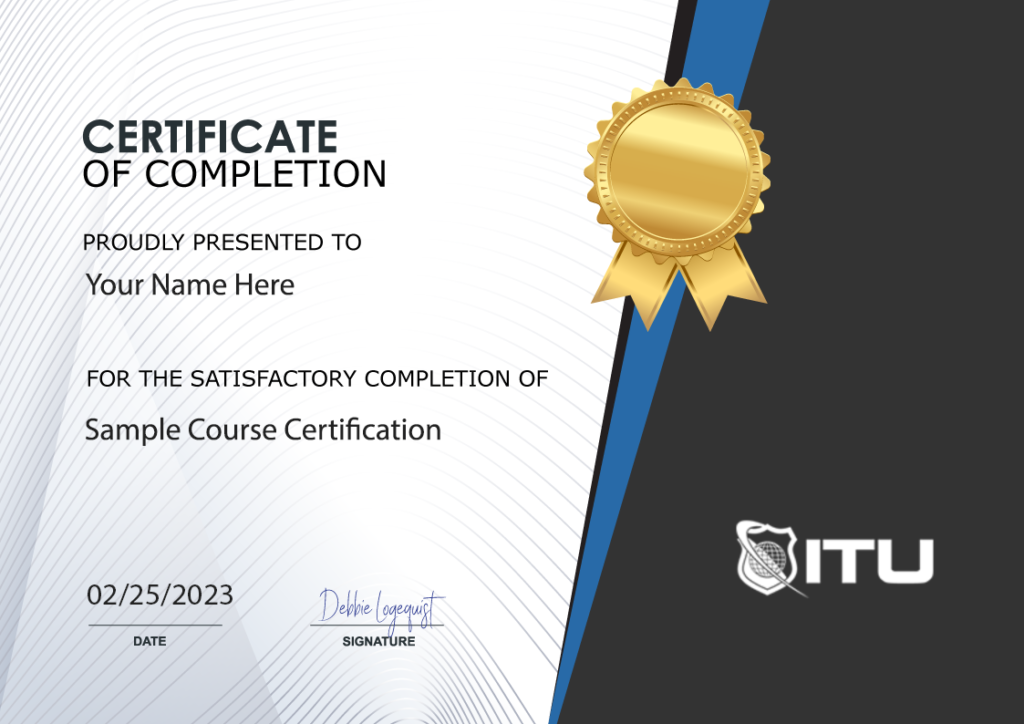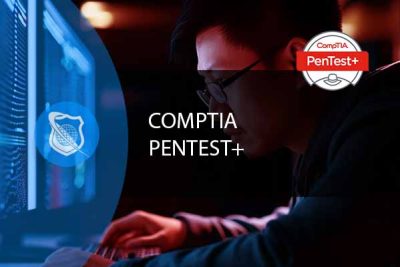
Lifetime
An ITU Online Training exclusive. The only Buy Once, Never Pay for IT training again program available. Plus, get all new and updated content for life.

With an All-Access Pass, you get access to every current and future ITU course. Access over 2,500 hours of on-demand IT Training 24/7. With over 13,000 on-demand training videos and 19,000+ practice questions, you'll have the tools to excel in the critical IT skills needed to elevate your IT Career. Our All-Access pass is available in three affordable plans.
Paris is the capital of France.
Tokyo is the capital of Japan.
Most Popular
Categories


With an All-Access Pass, you get access to every current and future ITU course. Access over 2,500 hours of on-demand IT Training 24/7. With over 13,000 on-demand training videos and 19,000+ practice questions, you'll have the tools to excel in the critical IT skills needed to elevate your IT Career. Our All-Access pass is available in three affordable plans.

ITU provides a vast array of IT-focused on-demand training designed to help you excel in both entry-level and advanced IT skills. Browse our most popular training or take a deper dive into our robust catalog of training categories.
Popular Courses All Categories
 CompTIA
Train for a globally recognized IT certification with our comprehensive CompTIA courses.
A+ | Network+ | Security+
CompTIA
Train for a globally recognized IT certification with our comprehensive CompTIA courses.
A+ | Network+ | Security+
 Cybersecurity
Master the art of combating cybersecurity threats and become a cyber hero.
Ethical Hacking (CEH) | CISSP | CISM
Cybersecurity
Master the art of combating cybersecurity threats and become a cyber hero.
Ethical Hacking (CEH) | CISSP | CISM
 Cloud Computing
An essential skill set in today's IT environments. Learn cloud computing platforms
Azure Administrator | Google Cloud | AWS Practitioner
Cloud Computing
An essential skill set in today's IT environments. Learn cloud computing platforms
Azure Administrator | Google Cloud | AWS Practitioner
 Project Management
Key to successful projects, learn the skills and methodolgy behind project management.
PMP | Risk Mgmt | Agile PM
Adobe
Business & Management
Cisco
Cloud Computing
CompTIA
Computer Support
Cybersecurity
Data Administration
Data Analysis
Development & Programming
Marketing & Social Media
Medical Coding & Billing
Microsoft
Microsoft Office
Network Administration
Networking & Software
Project Management
Web Development
Project Management
Key to successful projects, learn the skills and methodolgy behind project management.
PMP | Risk Mgmt | Agile PM
Adobe
Business & Management
Cisco
Cloud Computing
CompTIA
Computer Support
Cybersecurity
Data Administration
Data Analysis
Development & Programming
Marketing & Social Media
Medical Coding & Billing
Microsoft
Microsoft Office
Network Administration
Networking & Software
Project Management
Web Development

In this comprehensive IT course, you’ll acquire in-depth knowledge and practical skills in penetration testing, also known as pentesting, which are crucial for obtaining your pentest certification. The curriculum is designed to cover a wide range of topics, including client engagement, documentation procedures, and both passive and active reconnaissance techniques. You’ll gain expertise in system hacking across various platforms like Windows, Linux, and mobile devices. The course also includes modules on physical security testing and social engineering tactics to assess the resilience of your organization’s human element.
Included In This Course
Closed Captions
Certificate of Completion
Course Description
Are you looking to strengthen your cybersecurity prowess and earn a pentest certification? Dive into the world of penetration testing and hacking with the CompTIA PenTest+ (PT0-001) certification course. This comprehensive training equips you with hands-on skills to perform network and system penetration testing. Explore the ins and outs of this comptia pentest certification, covering its objectives in depth while acquiring practical experience. Whether you’re an aspiring cybersecurity professional or a seasoned expert, this course is designed to elevate your abilities in the realm of comptia pentesting.
Furthermore, you’ll have fun while exploring the intricacies of wired and wireless network hacking, network service exploitation, as well as application and web app hacking. These skills are invaluable for real-world assessments and risk assessment, helping you identify weaknesses before attackers do. By the end of this course, you’ll be well-prepared to validate your newly implemented security measures, making the comptia pentest+ cost a worthwhile investment for a robust cybersecurity posture.
The CompTIA PenTest+ (PT0-001) IT course provides a hands-on journey through the intricacies of penetration testing, offering a diverse range of skills and techniques. From client engagement and documentation to network hacking and exploitation, this preparation for pentest certification is your gateway to mastering the world of ethical hacking and earning your pen test certification. Embrace a holistic learning experience, supported by 34 training hours, 215 on-demand videos, and 249 prep questions, all supplemented with closed captions for enhanced accessibility. Plus, you’ll get insights into the comptia pentest+ cost and ROI.
This CompTIA PenTest+ course is designed for advanced learners and cybersecurity practitioners who actively seek vulnerabilities within networks and computer systems. Ideally, students should have completed Network+ and Security+ prerequisites for optimal preparedness for this pen test certification. The comptia pentest+ cost is an investment in your future cybersecurity career.
Penetration testing, often referred to as pentesting or comptia pentesting, is a critical component of a comprehensive cybersecurity strategy. Its importance is multi-faceted and here’s why:
| Aspect of Pentesting | Explanation and Importance |
|---|---|
| Identifies Weaknesses Before Attackers Do | One of the primary benefits of pentesting, and particularly comptia pentest, is that it allows organizations to identify vulnerabilities in their systems before malicious hackers can exploit them. By proactively addressing these weaknesses, companies can prevent potential breaches, thereby justifying the comptia pentest+ cost as a worthwhile investment in cybersecurity. |
| Compliance and Regulatory Requirements | Various industries have compliance standards that require regular penetration testing or pen test certification. For example, the Payment Card Industry Data Security Standard (PCI DSS) mandates regular pentests for businesses that handle credit card information. Earning a comptia pentest certification ensures that the professionals conducting these tests are well-qualified. Failing to comply can result in hefty fines and loss of customer trust, making the comptia pentest+ cost a minor expense in comparison. |
| Provides a Real-world Assessment | Unlike automated vulnerability scans, comptia pentesting involves simulating real-world attack scenarios. This gives organizations a more accurate understanding of their security posture. It’s a way to test not just the technology but also the people and processes involved in maintaining security. This makes comptia pentest certification invaluable for professionals in the field. |
| Risk Assessment | Penetration tests, especially those aligned with comptia pentest standards, provide valuable data that can be used for risk assessment. Organizations can prioritize vulnerabilities based on their severity and the potential impact on the business, allowing for more effective allocation of resources. This is often a key learning objective in comptia pentest certification courses. |
| Validates Security Measures | If you’ve recently implemented new security measures, a penetration test can validate their effectiveness. A comptia pentest certification ensures that the test is conducted to industry standards. It can also test the resilience of your employees against social engineering attacks, such as phishing, thereby assessing the effectiveness of your security training programs. This makes the comptia pentest+ cost and the investment in pen test certification worthwhile for ensuring robust cybersecurity measures. |
In summary, penetration testing is not just a technical requirement but a comprehensive strategy for securing an organization’s digital assets. Whether you’re considering earning a pentest certification or weighing the comptia pentest+ cost, the value of having skilled professionals conduct thorough, real-world assessments of your systems is immeasurable. It’s an essential practice for any organization serious about cybersecurity, making comptia pentest+ a highly sought-after certification in the industry.
Elevate your cybersecurity skillset with the CompTIA PenTest+ (PT0-001) course. From mastering reconnaissance techniques to navigating cloud security, this course empowers you to excel in the realm of ethical hacking. With an in-depth understanding of various attack vectors and countermeasures, you’ll be well-equipped to tackle the challenges of modern cybersecurity. Embrace the power of CompTIA PenTest+ and unlock a world of possibilities in the ever-evolving landscape of cybersecurity. Whether you’re aiming for a pentest certification or looking to understand the comptia pentest+ cost, this course has you covered.
Pentest+ is more than just a buzzword in the world of cybersecurity; it’s a vital skill set that every aspiring ethical hacker must master. As a professional with 20 years of experience in penetration testing, I’ve seen firsthand how pentest+ can make or break a company’s security infrastructure.

The CompTIA PenTest+ PT0-001 certification is one of the leading cybersecurity credentials for professionals in the IT industry. An understanding of the CompTIA PenTest+ objectives is crucial not only for successfully passing the exam but also for making a significant impact in your cybersecurity career.
In the dynamic realm of cybersecurity, the importance of understanding an adversary’s tactics cannot be overstated. Passive reconnaissance, a crucial component of the pre-attack phase, plays a pivotal role in the world of penetration testing. This unobtrusive information-gathering technique arms ethical hackers with essential insights, enabling them to identify vulnerabilities and strengthen defenses effectively.
Understanding key terms is essential for anyone preparing for the CompTIA PenTest+ certification or interested in the field of penetration testing. These terms form the foundation of knowledge required to effectively understand and engage in penetration testing and vulnerability assessment activities.
| Term | Definition |
|---|---|
| Penetration Testing | The practice of testing a computer system, network, or web application to find vulnerabilities that an attacker could exploit. |
| Vulnerability Assessment | The process of identifying, quantifying, and prioritizing vulnerabilities in a system. |
| Ethical Hacking | The practice of bypassing system security to identify potential data breaches and threats in a network. |
| Social Engineering | The art of manipulating people to gain confidential information or access to systems. |
| Phishing | A technique of fraudulently obtaining private information by pretending to be a legitimate entity in digital communication. |
| Encryption | The process of converting information or data into a code to prevent unauthorized access. |
| Cryptography | The practice of studying secure communications techniques to protect information from third parties. |
| Network Scanning | The process of identifying active devices on a network by sending data packets and analyzing responses. |
| Exploit | A piece of software, data, or commands that take advantage of a vulnerability to cause unintended behavior in software. |
| Firewall | A network security system that monitors and controls incoming and outgoing network traffic based on predetermined security rules. |
| Intrusion Detection System (IDS) | A device or software application that monitors network or system activities for malicious activities or policy violations. |
| Intrusion Prevention System (IPS) | A network security/threat prevention technology that examines network traffic flows to detect and prevent vulnerability exploits. |
| Virtual Private Network (VPN) | A technology that creates a safe and encrypted connection over a less secure network, such as the internet. |
| Malware | Malicious software designed to disrupt, damage, or gain unauthorized access to a computer system. |
| Rootkit | A collection of software tools that enable unauthorized access to a computer or a network. |
| Zero-Day Exploit | A vulnerability in software that is unknown to those who should be interested in mitigating the vulnerability. |
| Risk Management | The process of identifying, assessing, and controlling threats to an organization’s capital and earnings. |
| Compliance | Adherence to laws, regulations, guidelines, and specifications relevant to a business or organization. |
| Incident Response | The approach to handling and managing the aftermath of a security breach or cyber attack. |
| Security Policy | A set of rules and practices that specify how an organization manages, protects, and distributes sensitive information. |
This list provides a foundational understanding of key concepts in penetration testing and vulnerability assessment, aligning with the topics generally covered in the CompTIA PenTest+ certification.
The CompTIA PenTest+ (PT0-001) Exam costs the same as the core 1 exam, i.e., $226 USD.
If you fail your first attempt to pass any CompTIA certification examination, CompTIA does not require any waiting period between the first and second attempt to pass such examination.
The course outline includes planning & scoping, Windows operating systems, information gathering & vulnerability identification, software troubleshooting, networking, hardware & network troubleshooting.
The passing score for the exam for PenTest certification is 750 points on a scale of 100-900.
The CompTIA PenTest+ certification is designed for cybersecurity professionals, including penetration testers, ethical hackers, security analysts, and vulnerability assessment professionals.
Yes, the CompTIA PenTest+ certification is vendor-neutral, meaning it covers a broad range of cybersecurity concepts and is not tied to a specific technology or product.
CompTIA PenTest+ is unique in its approach, focusing on both hands-on skills and knowledge assessment. It emphasizes real-world scenarios and challenges candidates to perform penetration tests in various environments.

Course Outline
Chrys Thorsen is an education and technology expert who specializes in enterprise-level IT infrastructure consulting and certified training-of-trainers. In her career, she has garnered over 50 IT Certifications including CISSP, CISA, CEHv12, PenTest+, CompTIA CNVP, Cisco CCSI/CCNP, Microsoft Cloud and on-premises technologies, VMware vSphere, and many more. She has also authored 40 published certification textbooks, and over 35 full-length IT certification video courses.
When not working in the United States, Chrys spends her time abroad capacity-building IT literacy in developing nations in Sub-Saharan Africa. Her client list has included: the US Federal Government, the Republic of Zambia Ministry of Health, Cavendish University Zambia, Accenture, JP Morgan Chase, the US Centers for Disease Control and Prevention, the Elizabeth Glaser Pediatric AIDS Foundation (EGPAF), Hughes Aircraft, Microsoft, and many more.
Chrys lives by, and is fond of repeating, her professional creed:
“The only true measure of success for any project or training is results on the ground. Everything else is just noise.” “I teach what I deploy; I deploy what I teach.”
Start this course for free with our 10-day trial of the all-access subscription providing access to over 2,600 hours of training.
$49.00

Monthly All-Access Subscription
7 Days Free - $39.00 / month
A great option at an affordable monthly price.
Annual All-Access Subscription
$229 / year
A discounted price when paying for your All Access library on an annual basis.
Lifetime All-Access Library
$379 One time payment
Exceptional Value. Pay once, never have to buy IT training again.
$59.00
Certified Ethical Hacker v12 is the latest iteration of EC-Council’s Certified Ethical Hacker v12 series. ITU offers CEH training to provide you the tools to research, discover and scan targets, analyze vulnerabilities and test attack methods and tools. The focus of this CEH online training course is to solve the challenge of breaking into a target network, collect evidence of success, and escape unnoticed. Every lesson and topic are infused with step-by-step guided practice using real hardware- and software-based hacking tools. Throughout both lecture and hands-on activities, the instructor, Chrys Thorsen provides commentary from the field including tips, tricks and hard-learned lessons.
$49.00
This online training program for CompTIA Security Plus Certification will teach you a foundational understanding of computer and network security. Our online course will equip you with the knowledge necessary to craft a comprehensive threat analysis and more importantly secure your network from cybersecurity attacks. In addition, you’ll uncover how create secure network designs of devices, media outlets, penetration testing, and networks. Our online course covers all objectives needed to pass your CompTIA Security+ SY0-601 exam and acquire your certification.
$49.00
This CHFI course will cover the security discipline of computer forensics from a vendor-neutral perspective and work towards preparing students to become Forensic Investigators in Computer Hacking.

Unlock endless learning opportunities with over 2,500 hours of IT training at our lowest price ever. Plus, get all new and updated online courses for free while your subscription remains active.
Cancel at your convenience. This exceptional deal on IT training provides you access to high-quality IT education at the lowest monthly subscription rate in the market. Boost your IT skills and join our journey towards a smarter tomorrow.